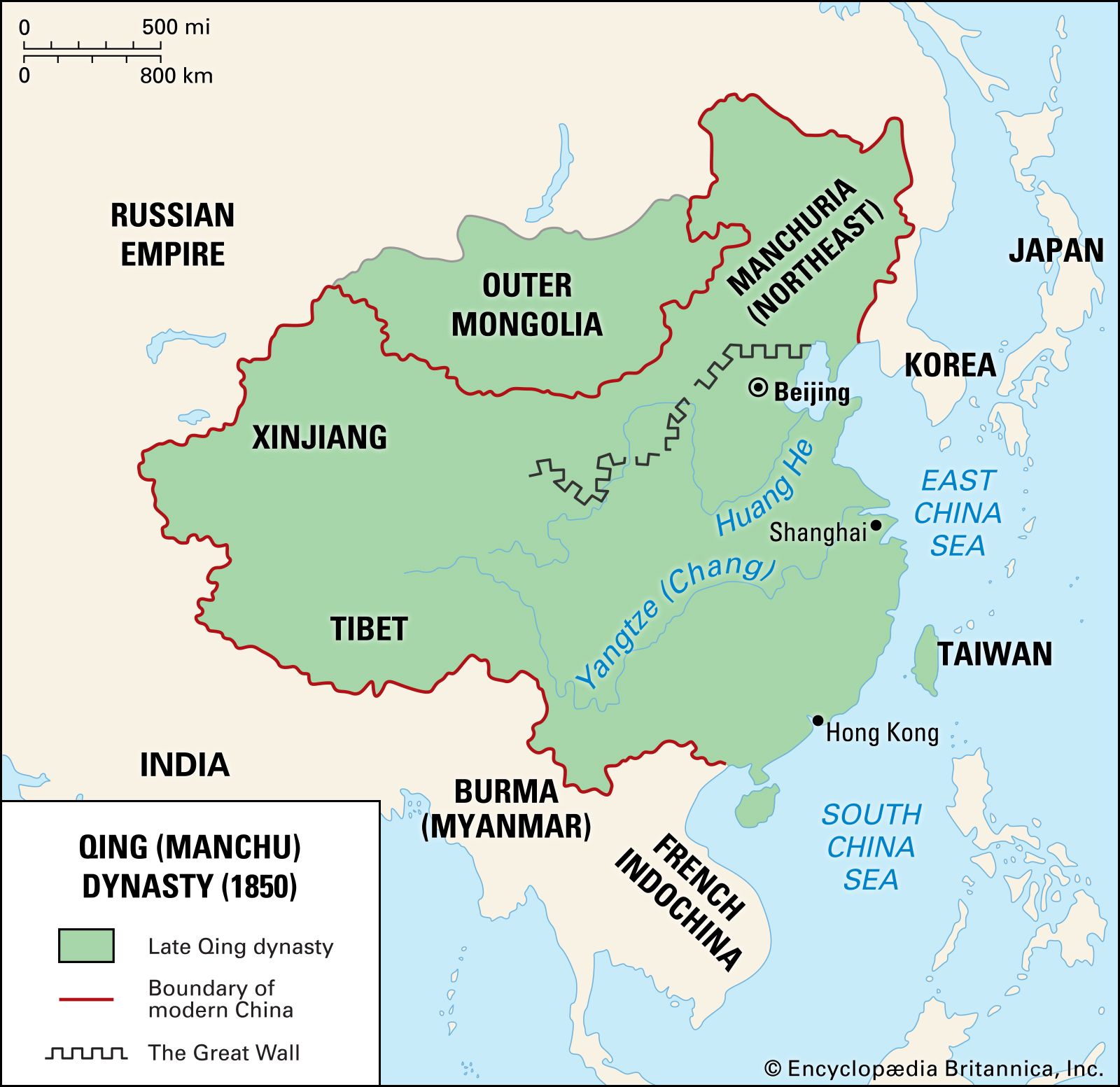The Qing Dynasty was founded by the Manchu people and lasted from 1644 to 1912. It was known for its military conquests, expansion of territory and patronage of arts and literature. The Ming Dynasty, which preceded the Qing Dynasty, was founded by Zhu Yuanzhang and ruled China from 1368 to 1644. It was known for its economic prosperity, scientific and technological advancements, and architectural achievements. While the Qing Dynasty had a centralized economic system, the Ming Dynasty’s focus was on agriculture and handicrafts. Both dynasties made significant cultural achievements in art, literature, and architecture.
The Qing Dynasty vs. The Ming Dynasty: Comparing Two Chinese Dynasties
Introduction
China has a long and rich history of dynasties that lasted for hundreds or even thousands of years. The Qing Dynasty and the Ming Dynasty are two of the most significant and influential in Chinese history. They both ruled over China for centuries, leaving a profound impact on the country’s politics, economy, and culture. In this article, we will compare and contrast the Qing Dynasty and the Ming Dynasty, two of the most important dynasties in China’s history.
Background of the Qing Dynasty
The Qing Dynasty was the last imperial dynasty of China, lasting from 1644 to 1912. It was founded by the Manchu people, who conquered China and established their rule over the Han Chinese. The Qing Dynasty is known for its military conquests, expansion of territory, and patronage of the arts and literature.
Background of the Ming Dynasty
The Ming Dynasty preceded the Qing Dynasty, ruling China from 1368 to 1644. It was founded by Zhu Yuanzhang, a peasant who rose to power and established himself as the emperor. The Ming Dynasty is known for its economic prosperity, scientific and technological advancements, and architectural achievements.
Political System
The Qing Dynasty was an absolute monarchy, with the emperor holding complete control over the government and the people. The emperor was assisted by a group of officials who were appointed based on their merit and education. The government was divided into three main bureaucracies: the civil service, the military, and the household.
On the other hand, the Ming Dynasty was also an absolute monarchy but with a more traditional approach. The emperor held supreme power, but he had to rely on the imperial bureaucracy to fulfill his functions. The bureaucracy was made up of nine ministries that were responsible for different aspects of government, such as finance, justice, and defense.
Economic System
The Qing Dynasty was characterized by a centralized economic system, with the government controlling much of the country’s resources and production. The major industries during this period were agriculture, silk production, and trade. The government encouraged foreign trade and established a series of ports that were open to foreign merchants.
The Ming Dynasty, on the other hand, had a more decentralized economic system, with a focus on agriculture and handicrafts. The government implemented a series of reforms aimed at promoting agriculture and land development, resulting in increased agricultural production. The Ming Dynasty was also known for its naval expeditions, which were aimed at establishing trade relations with other countries.
Cultural Achievements
The Qing Dynasty was a period of great artistic and literary achievement in China. It was during this period that the famous Qingming scroll was painted, depicting life in the capital city of Beijing during the festival of Qingming. The Qing Dynasty was also known for its porcelain production, calligraphy, and literature, with poets such as Pu Songling and Cao Xueqin producing some of the most celebrated works in Chinese literature.
The Ming Dynasty was equally known for its cultural achievements, especially in the fields of literature and the arts. The Ming Dynasty was a period of great literary and artistic creativity, with poets such as Li Bai, Du Fu, and Wang Wei producing some of the most celebrated works in Chinese literature. The Ming Dynasty was also known for its architecture, with many significant structures being built during this period, such as the Great Wall of China and the Forbidden City.
Conclusion
In conclusion, the Qing Dynasty and the Ming Dynasty were two of the most important dynasties in Chinese history. Although they shared some similarities in terms of their political systems, each dynasty had its distinct characteristics, achievements, and legacies. The Qing Dynasty was a period of military conquests, economic centralization, and cultural and artistic achievement. The Ming Dynasty was a period of economic prosperity, technological and scientific advancements, and architectural feats. Regardless of their differences, both dynasties played a significant role in shaping Chinese history and culture, and their legacies continue to be felt to this day.
